20 Things to Do in Cusco, Peru – A Complete Guide
This is your complete guide to visiting Cusco, the city which was once the capital of the Inca Empire. Due to its close proximity to Machu Picchu, Cusco is one of the most visited cities in Peru. In this blog post you can read about all the things to do in Cusco, which we’ve categorised into different areas such as best Incan Ruins, viewpoints, museums, markets and more.
This post will also answer your frequently asked questions about Cusco including how to get to the city, how long you need there, where to stay, where to eat and what is a good time to visit.
If you’d like to see what we got up to in Cusco, then make sure to watch our video on YouTube. For more Peru videos, check out the Peru Playlist on our YouTube channel.
Disclosure: This post may contain affiliate links, which means we may receive a small commission if you click a link and purchase something. Clicking these links won’t cost you anything, but it will help us to keep this site up and running! Learn more about our affiliate policy.
Introducing Cusco, Peru
Located at 3,400m (11,154 ft) above sea level, Cusco (also Cuzco, or Qosqo) is situated in the heart of one of the world’s most beautiful mountainous regions.
Founded in 1,100 AD, it used to be the capital of the Inca Empire. Apparently, the city was founded by Manco Capac who was the leader of the Tiahuanaco (or Tiwanaku) civilization from Lake Titicaca. They migrated north to the lush and fertile valley and formed the Empire of Incas in Cusco.
Cusco was constructed in the shape of a puma, which is the same as the believed shape of Lake Titicaca (The head is apparently Sacsayhuaman with the Plaza de Armas (or Huacaypata) representing the belly and the Tullumayo River as the tail).
Cusco was the most important city in the Inca Empire and they considered it the ‘navel of the world’. Their empire stretched from Quito, Ecuador to Santiago, Chile making it the largest empire ever seen in the Americas.
When the Spanish arrived in 1533, they moved the capital to Lima. They built temples, monasteries and manor houses all over the city, destroying many of the original structures. After years of fighting against the Spanish, Peru finally gained its independence in 1821.
In 1983, UNESCO gave Cusco the title of ‘Cultural Heritage of Humanity’. Later, Peru declared the city to be the ‘Cultural Heritage of the Nation’ and the ‘Tourist Capital of Peru’.

20 Best Things to Do in Cusco, Peru
Cusco is packed with places to visit. We spent quite a long time in the city compared with most tourists and still struggled to see everything that we initially pinned on our map.
Without overwhelming you, we’ve split the attractions into categories such as Incan sites, cool viewpoints, museums and other points of interest. That way, you can pick and choose what you want or have time to see during your stay.
Things to Do Around the Historic Centre of Cusco
1. Relax at Plaza de Armas
The best way to get used to the high altitude is to walk around Cusco’s Plaza de Armas which used to be the Incas most important gathering spot.
Did you know? The original name of the main square was Huacaypata which means ‘place of crying’ in Quechua. This is because the Inca nobility used to perform meditation ceremonies at the Plaza de Armas that normally ended in tears.
During the Spanish conquest, many of the native temples and buildings were replaced with churches and mansions. Despite the dramatic changes, the Plaza has remained an important political, social and religious hub for the people. A lot of important events happened at the square as people were fighting for their freedom.
Today, the Plaza de Armas is still the heart of the city with many people – locals and tourists alike – gathering here day and night. You can come down early in the morning to appreciate the peace and quiet. Then, make sure to come back in the afternoon and evening to see the square come to life with people.
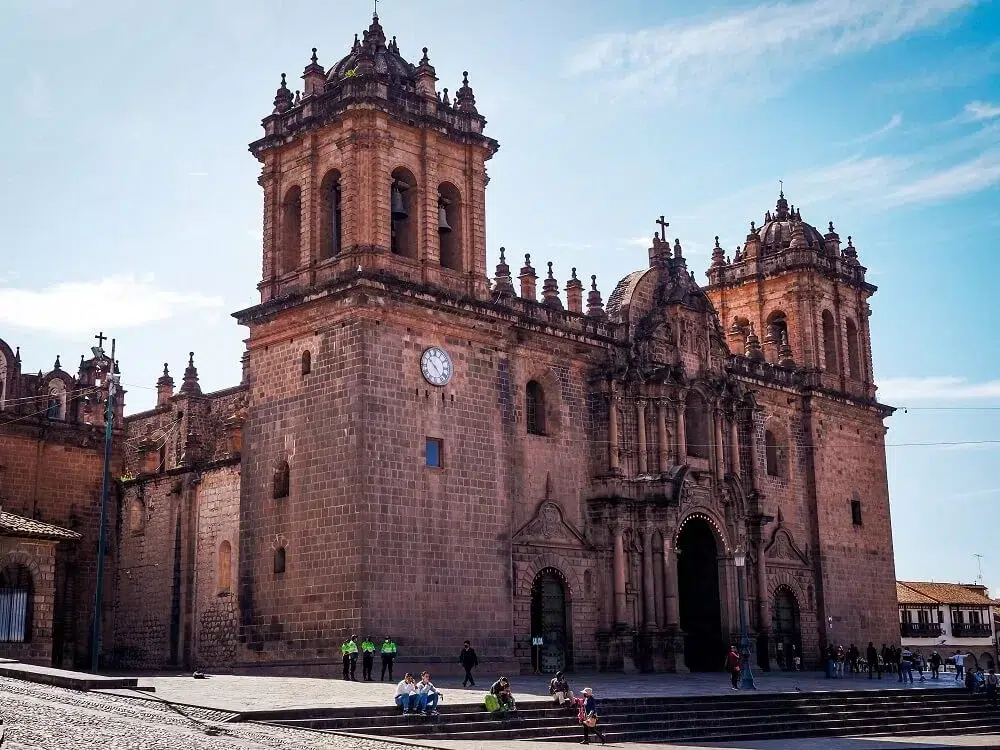
2. Admire Cusco Cathedral
One of the many buildings surrounding the Plaza de Armas is Cusco Cathedral or the Cathedral Basilica of the Assumption of the Virgin.
It was the first cathedral built in Cusco and took nearly 100 years to finish. The construction started in 1559 and wasn’t completed until 1654. It is a great example of Renaissance, Baroque and Gothic styles.
The Cathedral is located where the Inca’s Kaswarkancha (Quishuarcancha) temple used to be. Apparently, the Spanish used stones from Sacsayhuaman Archaeological Park to build the Cathedral. It was definitely a clear message that the Spanish wanted to replace the Inca religion with Catholicism.
Today, Cusco Cathedral is an UNESCO World Heritage site and houses archaeological relics, artefacts, statues, and colonial paintings. The most popular painting you can see inside is the unique ‘Last Supper’ painting by Marcos Zapata. On the painting Jesus and his disciples dine on traditional Peruvian dishes, including a guinea pig. There are also lots of beautiful artworks from the Cusco art school on display.
Note. You cannot take photos inside.
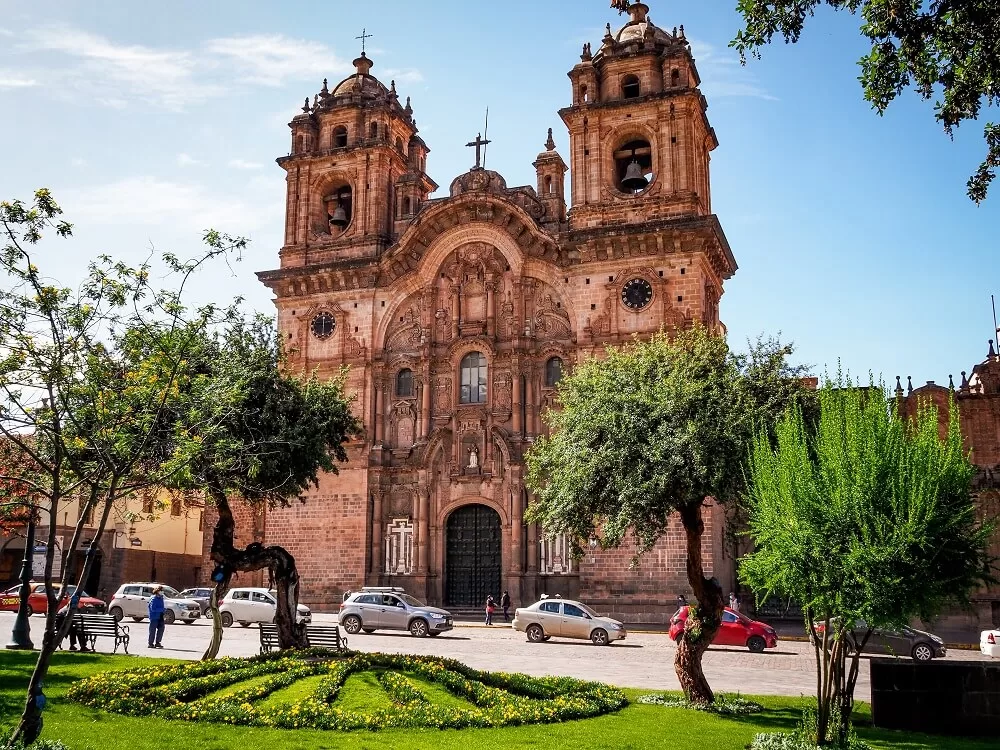
3. Check out the Church of the Compañia de Jesus of Cusco
Occupying another side of the Plaza de Armas, next to Cuso Cathedral, is the Church of the Compañia de Jesus of Cusco.
This baroque church was built between 1571 and 1593. After a strong earthquake in 1650, it had to be refurbished.
Just like the Cathedral, it was also built on an old Incan site, the royal house of the Inca Huayna Cápac, also known as the ‘Amarucancha’.
Inside you can see an impressive altar carved in wood and covered in gold leaf, as well as a collection of sculptures and paintings from the Cusqueña School of Art.
Note. You cannot take photos inside.
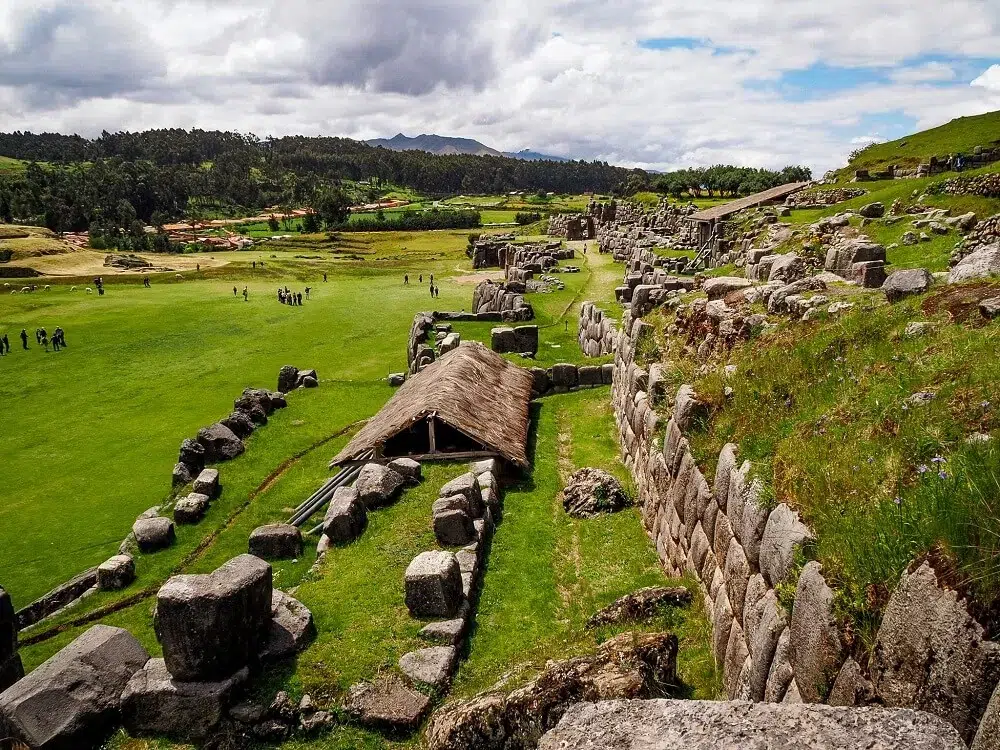
Inca Ruins to Visit in Cusco
4. Visit the Sacsayhuaman Ruins
One of the most popular Incan sites in Cusco is the Sacsayhuaman Ruins (or Saqsaywaman). Yes, if you’re trying to pronounce it, it does sound a bit like ‘sexy woman’, especially with the latter spelling.
Perched atop a hill overlooking Cusco, Sacsayhuaman used to be the most important military base of the Inca Empire. Some say that it also operated as a ceremonial centre. However, when the Spanish arrived it was used as a fortress, so nobody really knows if that was true or not.
During your visit you’ll notice some huge blocks making up the walls of the ruins. These are apparently some of the biggest blocks you’ll see at an Incan site. As with many Incan constructions, the blocks were fitted together tightly so that they didn’t have to use mortar.
Today, Sacsayhuaman is a part of the UNESCO sites in the Cusco area.
Top Tip. If you visit Cusco in June, then you can enjoy the traditional religious ceremony called Inti Raymi, which celebrates the ancient Incan God of the Sun and is held at Sacsayhuaman.
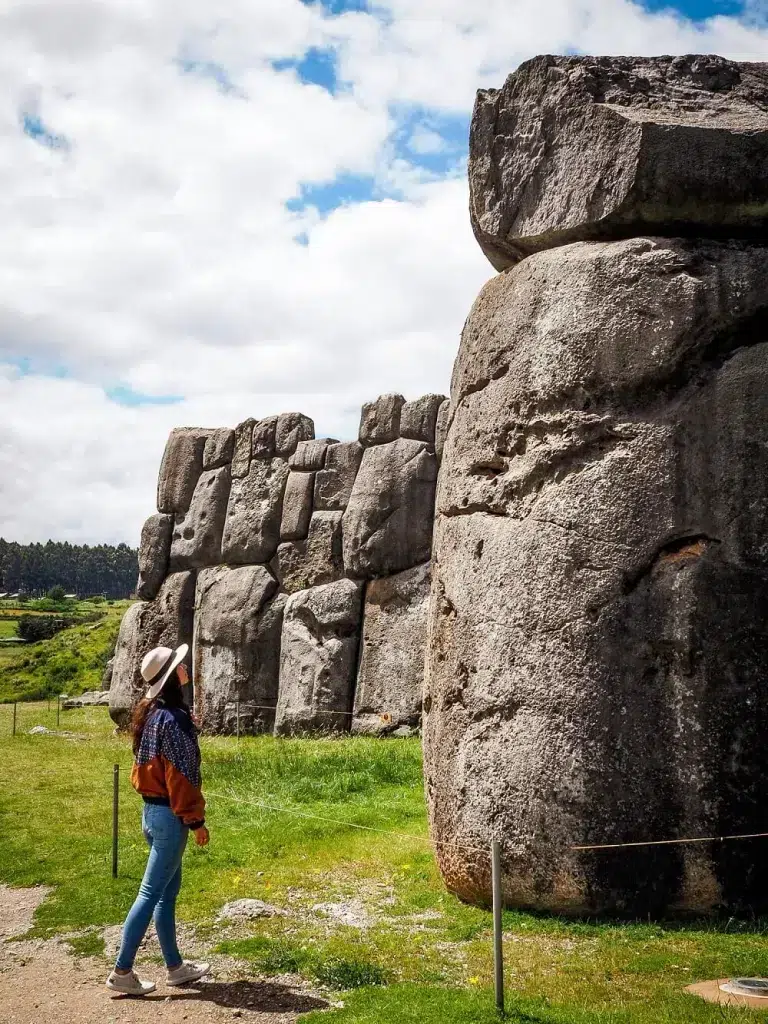
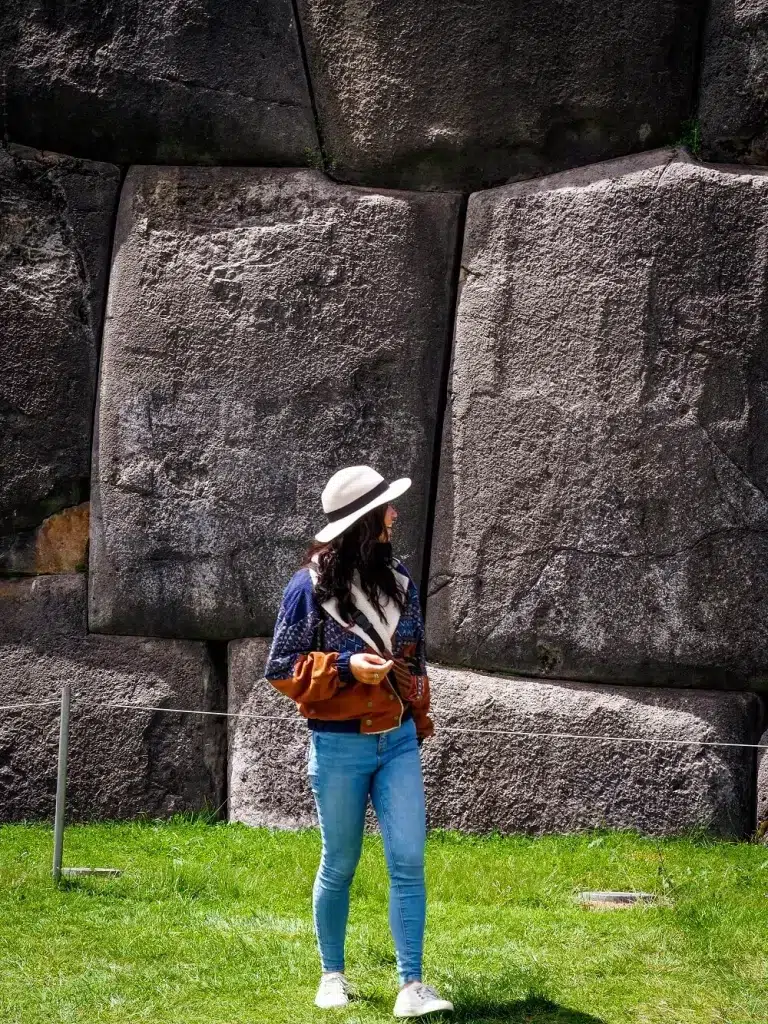
Useful Information Before Your Visit to Sacsayhuaman
How to get to the Sacsayhuaman Ruins? You can either walk or take a taxi up to the ruins. In case you’ll be completing either the Inca Trail or Salkantay Trek in the upcoming days, then we recommend walking up to the site. It’s a great way to acclimatise to the altitude. Once you’re there, you can combine your visit with Cristo Blanco Viewpoint which is only a few minutes’ walk from the site.
Entry Fee to the Sacsayhuaman Ruins. It costs S/.130 (35.40 USD) to enter the site. However, this allows you to visit 16 different sites with the same ticket which is known as the Boleto Turistico. If you don’t want to take day trips from Cusco to other Incan sites, then you can just buy the Partial Tourist Ticket for S/.70 (19 USD) that lets you visit a few other sites in Cusco. Read more about the Boleto Turistico.
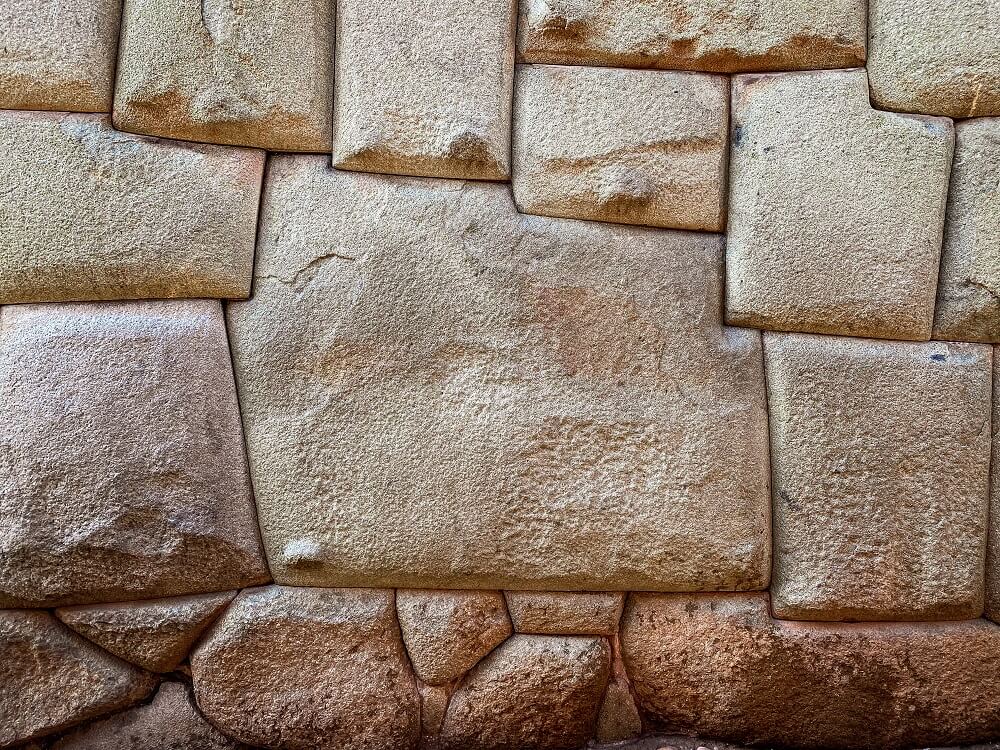
5. Stop By the Twelve-Angled Stone
If you’re wondering around the narrow and steep streets of Cusco, you have to stop at the ‘twelve-angled stone’. It’s located along Calle Hatunrumiyoc behind Cusco Cathedral towards the San Blas square.
The ‘twelve-angled stone’ is part of the wall of the Archbishop’s Palace and you can easily spot it based on the amount of tourists that will always seem to be standing in front of it.
You might even think that we’re just trying to make this post longer by suggesting a visit to a random stone in the wall. You’re partly right. Compared with other things to do in Cusco, this isn’t going to be the most exciting spot on our list, but hear us out! I mean, there’s a crowd there for a reason.
If you’ve been in Peru for a while now, you’ll certainly be getting familiar with the Inca’s building style. Their architectural knowledge is still a mystery to archaeologists.
The wall with the twelve-angled stone was built without any mortar or binding material. You’ll see that every single stone block was cut so it would fit seamlessly with the other blocks. It’s still a mystery as to how they managed to cut 12 angles so perfectly. Cut out of green diorite, this particular block weighs about 6 tons.
Apparently, you wouldn’t even be able to fit a piece of paper between the block. Pretty impressive if you ask us!
6. Visit Coricancha and Iglesia De Santo Domingo
The Coricancha (Qorikancha or Koricancha) religious complex used to be the spiritual and metaphysical centre of the Inca Empire. It was built in the mid-15th century and was dedicated to Inti, the Inca Sun God.
During Inca times the temple was covered in 700 solid-gold sheets and had a large number of gold artefacts and adornments.
As you might have guessed, the Spanish built a Christian monastery on top of Coricancha and destroyed most of the temple in the process. The monastery, called Iglesia de Santo Domingo, still stands on the site today.

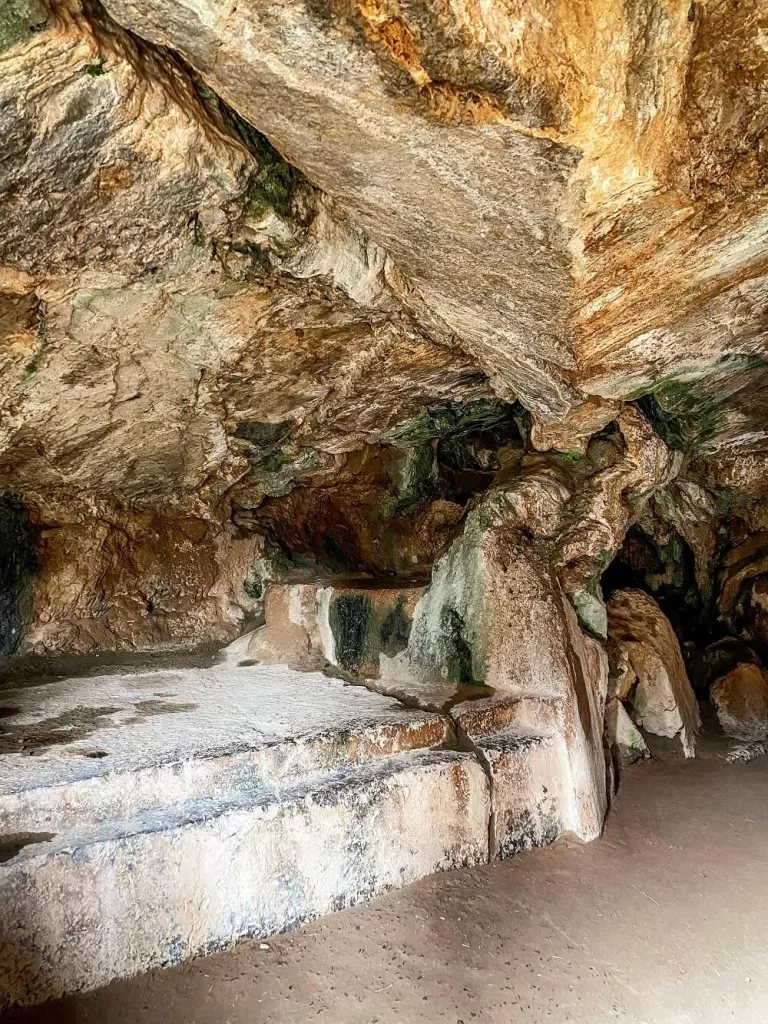
7. Check Out Q’enco Archaeological Complex
Located east of the Sacsayhuaman Ruins and the Cristo Blanco viewpoint is another Incan site called Q’enco.
Although less impressive than the Sacsayhuaman Ruins, the uniqueness of Q’enco comes from the fact that it is entirely carved out of a humongous monolith. It also offers some pretty amazing views of Cusco, so it’s definitely worth checking out.
In the Quechua language Qenqo means ‘labyrinth’, which perfectly describes the zig-zagging tunnels and canals the site consists of.
Although the purpose of the site is still a mystery, many agree that the temple was a holy site for the Incas where death rituals took place. Some suggest that the canals carved into the rock were used to transport blood from sacrifices and chicha (a corn drink).
Entry Fee to Q’enco. It costs S/.130 (35.40 USD) to enter the site. However, it is part of the Boleto Turistico ticket that allows you to visit 16 different sites. If you don’t want to take day trips from Cusco to other Incan sites, then you can just buy the Partial Tourist Ticket for S/.70 (19 USD) that lets you visit a few other sites in Cusco. Read more about the Boleto Turistico.
8. Visit Tambomachay Ruins
Located just outside of Cusco is Tambomachay, another Inca site you can add to your list. The whole ruins consist of three stepped terraces, aqueducts, canals and waterfalls. For this reason, it is also referred to as the ‘Baños de Inca’.
As always, the exact function of the site is still unknown. Many sources suggest that it could’ve been used as a military or ceremonial site, or as an Incan spa.
How to get to the Tambomachay Ruins? You can either walk or take a colectivo or taxi up to the ruins. The walk is a long one, so bear that in mind. Taking a colectivo from Calle Puputi toward Pisac might be the fastest and cheapest way to reach the ruins. Just ask the driver to stop at the ruins. Taxis are going to be the most expensive mode of transport. You’ll also need to ask the driver to wait for you if you want a ride back to the city.
Entry Fee to Tambomachay. It costs S/.130 (35.40 USD) to enter the site. However, it is part of the Boleto Turistico ticket that allows you to visit 16 different sites. If you don’t want to take day trips from Cusco to other Incan sites, then you can just buy the Partial Tourist Ticket for S/.70 (19 USD) that lets you visit a few other sites in Cusco. Read more about the Boleto Turistico.
9. Stop by Puka Pukara
This large fortress is located just to the south of Tambomachay Ruins, so you can easily combine your visit. Its name means ‘red fortress’ and comes from the red granite that was used as the building material. Many believe that the site was used as a guard post that protected access to Cusco.
You’ll be surprised to see that compared to other Inca sites, Puka Pukara consists of irregular blocks that fit together rather poorly. Some suggest that it was built in a hurry, but its layout is still functional. It definitely won’t be as impressive as its neighbouring Inca ruins, but it’s worth stopping at if you have the Boleto Turistico.
How to get to Puka Pukara? You can either walk or take a colectivo or taxi up to the ruins. The walk is a long one, so bear that in mind. Taking a colectivo from Calle Puputi toward Pisac might be the fastest and cheapest way to reach the ruins. Just ask the driver to stop at the ruins. Taxis are going to be the most expensive mode of transport. You’ll also need to ask the driver to wait for you if you want a ride back to the city.
Entry Fee to Puka Pukara. It costs S/.130 (35.40 USD) to enter the site. However, it is part of the Boleto Turistico ticket that allows you to visit 16 different sites. If you don’t want to take day trips from Cusco to other Incan sites, then you can just buy the Partial Tourist Ticket for S/.70 (19 USD) that lets you visit a few other ruins in Cusco. Read more about the Boleto Turistico.
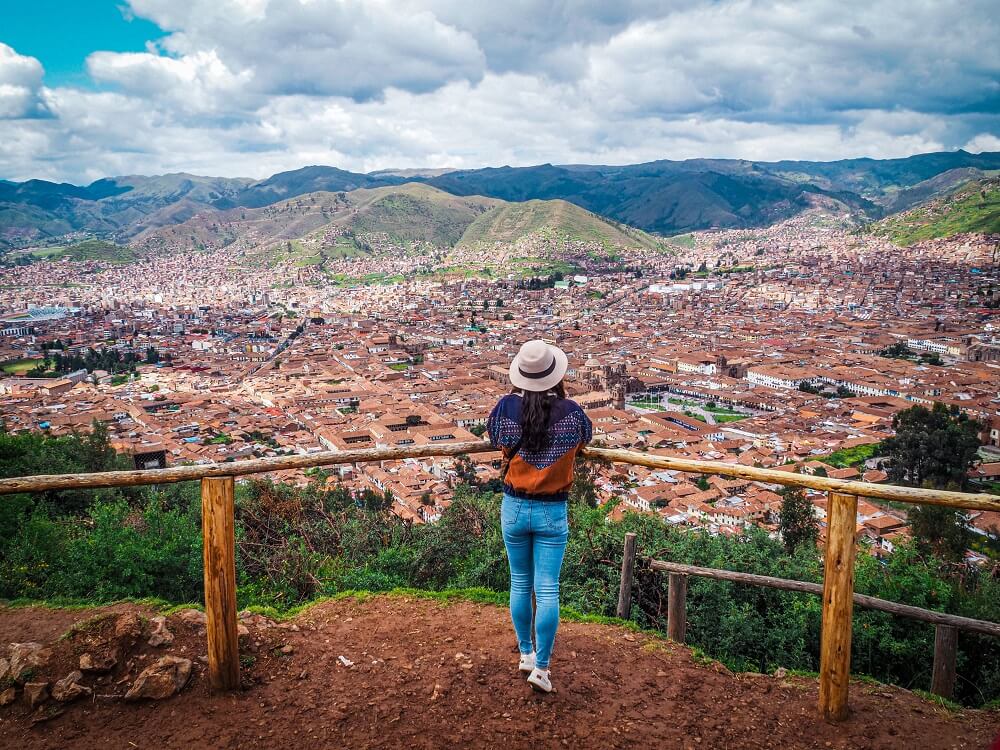
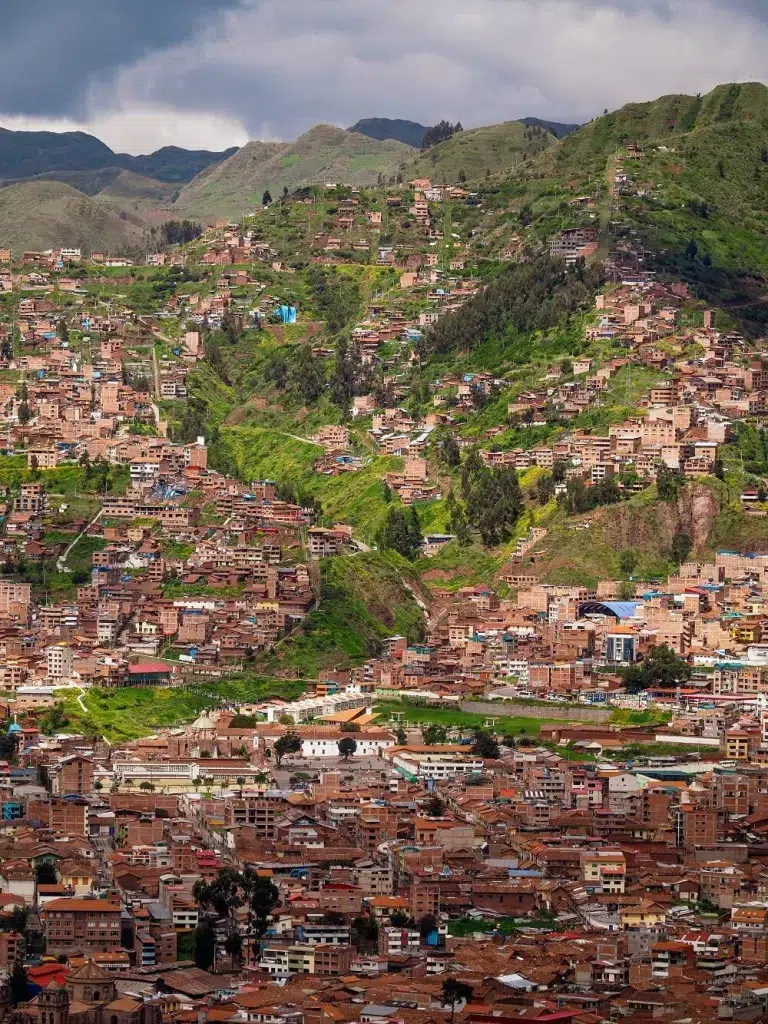
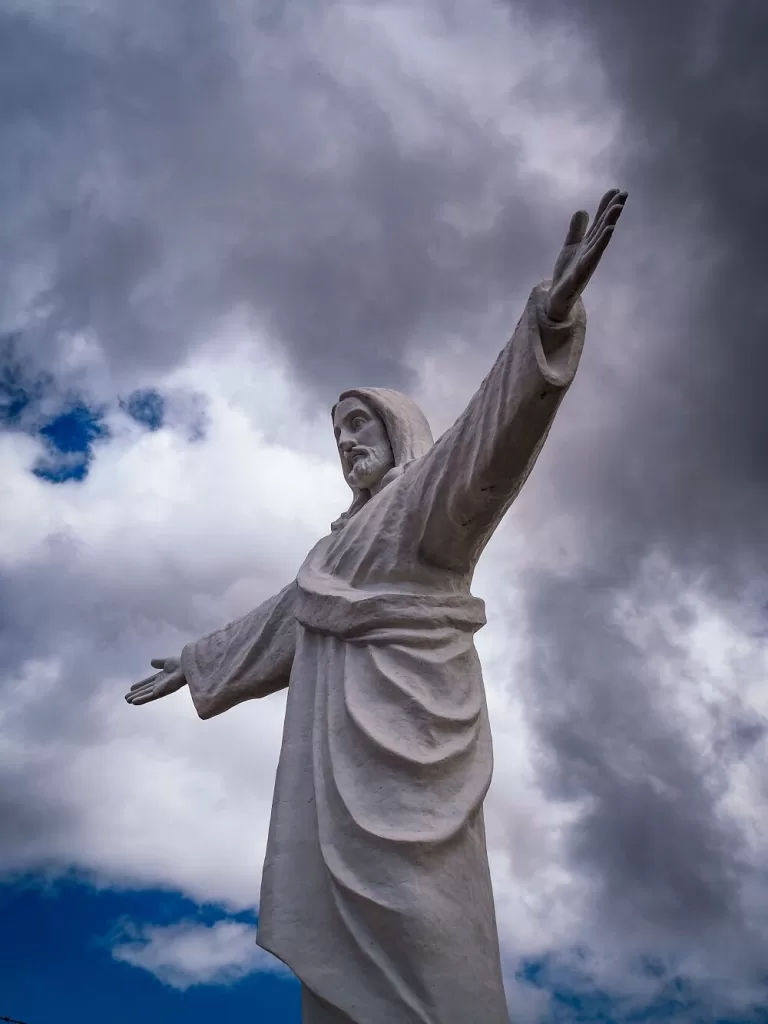
Best Viewpoints in Cusco, Peru
10. Cristo Blanco Viewpoint
One of the best viewpoints in Cusco is the Mirador desde el Cristo Blanco, located close to Sacsayhuaman.
The viewpoint is named after the 8m tall statue of Jesus Christ (Cristo Blanco). The statue was a gift from the Arab-Palestinians after World War II.
Construction of the Cristo Blanco statue began in 1944 and it was completed in 1945. It was created by Francisco Olazo Allende.
How to get to the Cristo Blanco viewpoint? You can either walk or take a taxi up to the viewpoint. If you’ll be completing either the Inca Trail or Salkantay Trek in the upcoming days, then we recommend walking up to the viewpoint. It’s a great way to get used to the altitude. Once you’re there, you can combine your visit with Sacsayhuaman which is only a few minutes’ walk from the viewpoint.

11. Mirador de Plaza San Cristobal
Another must visit viewpoint in Cusco is Plaza San Cristobal.
Located next to San Cristobal Church, it is a popular place to visit for some lovely views of Cusco. It’s en-route to Sacsayhuaman, so a great place to stop for a few minutes to catch your breath.
The church next to the plaza was built on the ruins of an Incan palace and you can visit inside and go up to the bell tower for S/.30 (8 USD).
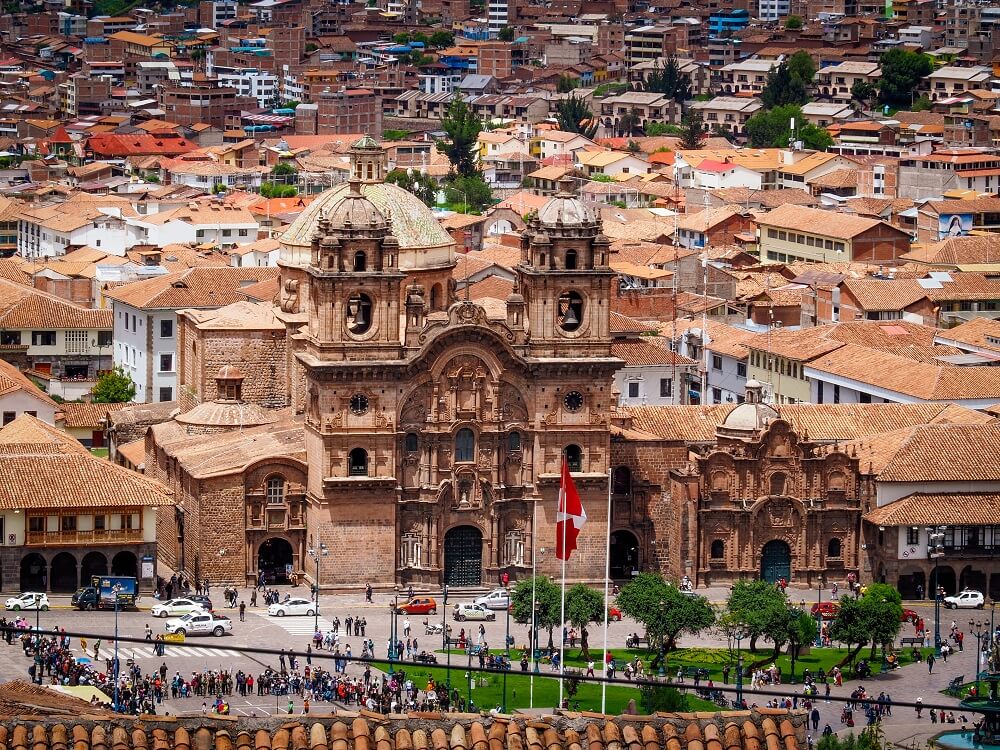
12. Get an Overview of the Plaza de Armas from a Café
Whilst walking around the main plaza is a must do activity in Cusco, it’s also advised to appreciate the scale of the square from one of the many cafes and bars.
There are plenty of eateries to choose from, located on the second floors of the buildings surrounding the plaza. This will definitely give you the chance to enjoy the hustle and bustle of the busiest spot in Cusco from afar, whilst sipping some coffee or a beer. You might even get a better photo of the Cathedral from there, which can be tricky to photograph from the ground.
There are also some bars further from the plaza that provide just as good views of the area. We stumbled upon Plaza Vista Café Lounge Bar, which is possibly one of the finishing points of a free walking tour.
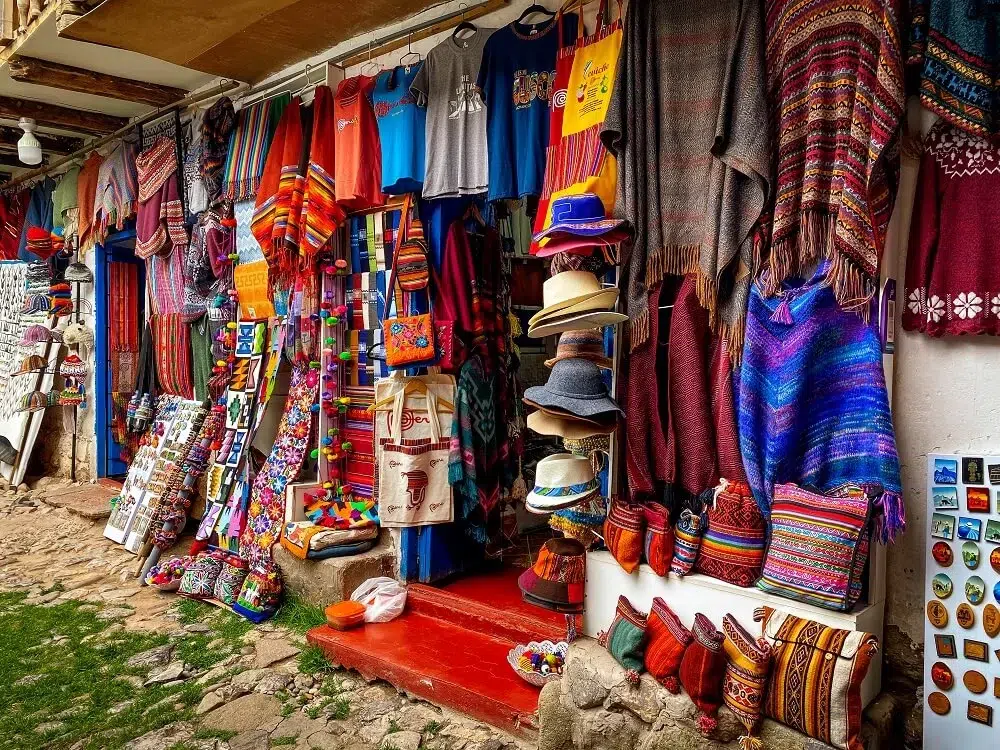
Best Markets and Places to Buy Souvenirs in Cusco
13. San Blas Neighbourhood
Often referred to as the cultural and artistic district of Cusco, San Blas is an area you can’t skip visiting.
The reason why it’s considered the artisan neighbourhood is because many architects and artisans used to live around here.
Did you know? Apparently, this was the place where they found the remains of Pachacutec, who ordered the construction of Machu Picchu. Of course, the Spanish changed the name when they arrived to San Blas after a bishop.
It’s a very beautiful area with picturesque, narrow cobblestone streets filled with coffee shops and restaurants. San Blas also has some independent clothing and jewellery shops and we noticed an outdoor market taking place every so often at Plazoleta de San Blas.
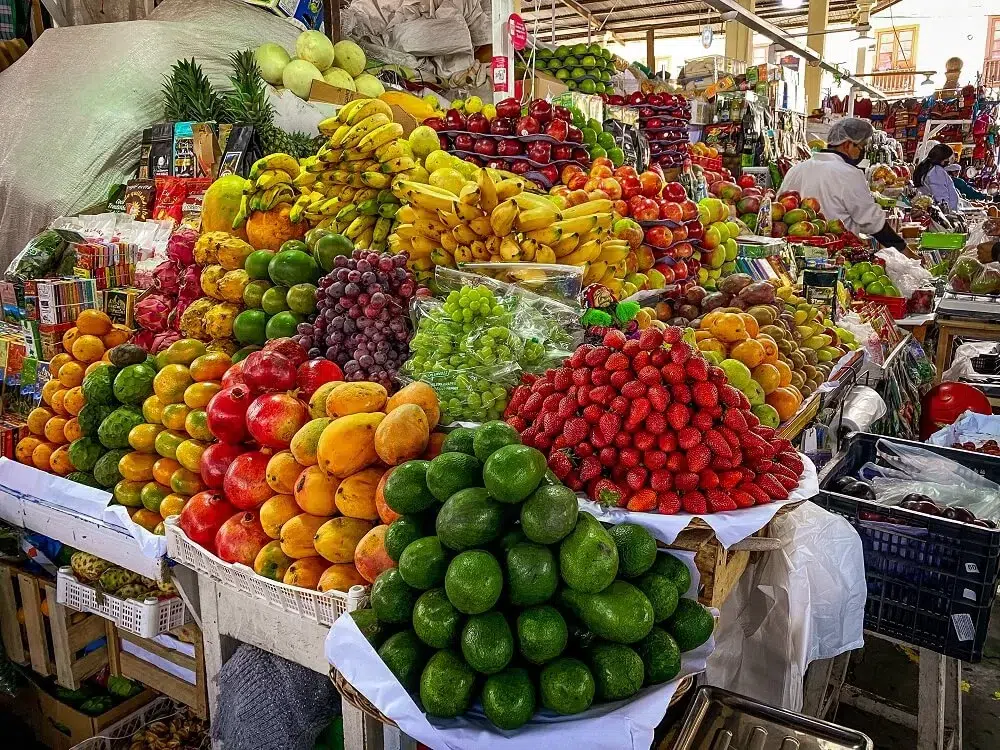
14. San Pedro Market
A spot we visited multiple times during our month in Cusco was San Pedro Market. Located only a few minutes walk from the main plaza, it’s the best place to go for local produce and souvenir shopping.
Whilst the market is filled with your typical Peruvian souvenirs, there are a ton of other everyday items you can buy from the vendors too. They have everything from fresh and dried fruit, juices, bread, meat and spices. We came here multiple times to stock up on produce during our stay in Cusco.
If you want to step away from the very touristy main square, enjoy a bit of chaos and have a chat with the locals, then put San Pedro Market on your Cusco itinerary. You’re almost guaranteed to not leave the place empty handed.
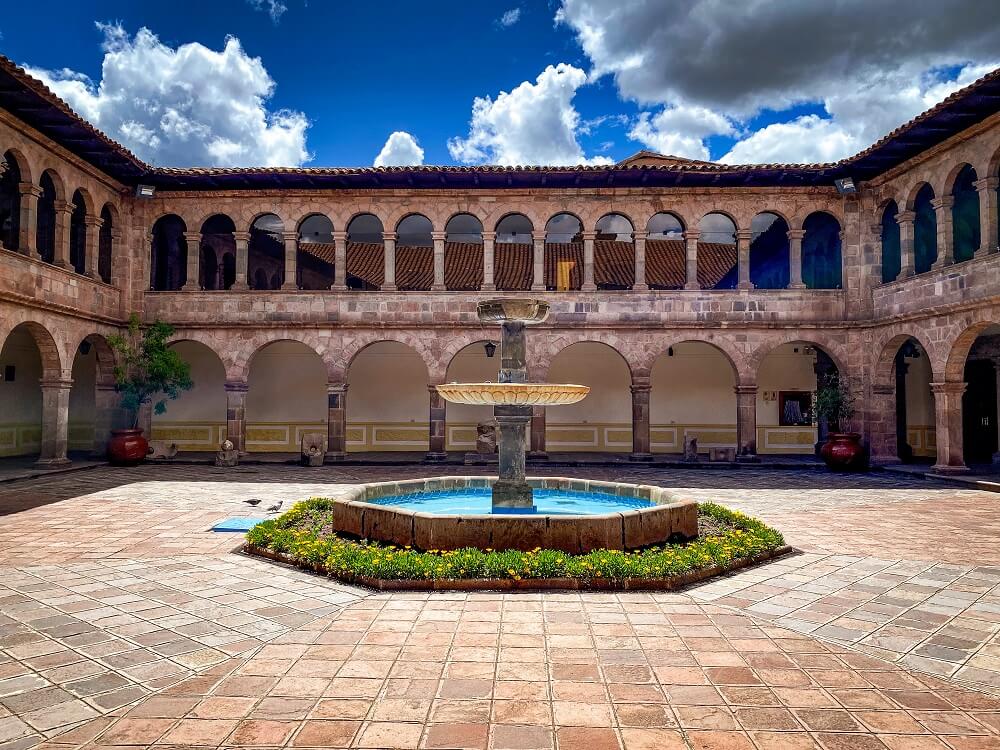
Museums to Visit in Cusco, Peru
15. Inca Museum
The Inca Museum is located inside a 17th century colonial mansion called Casa del Almirante. It was built on old Inca ruins. The museum has a collection of artefacts dating back to the Inca and Pre-Inca times. There are also paintings from the Cusco School.
The building was bought by the university UNAAC and it is still run by them. Entry fee is S/.10 (2.75 USD).
16. Museum of Pre-Columbian Art
Located in the Plaza de las Nazarenas, not far from the Inca Museum, this museum displays artefacts and artworks from the pre-Columbian era.
The museum has ten galleries called Formative, Nasca, Mochica, Huari, Chancay – Chimu, Inca, Wood, Jewellery and Stone, Silver, and Gold and Metals.
The museum is open daily between 9AM and 10PM. The entry fee is S/.20 (5.5 USD).
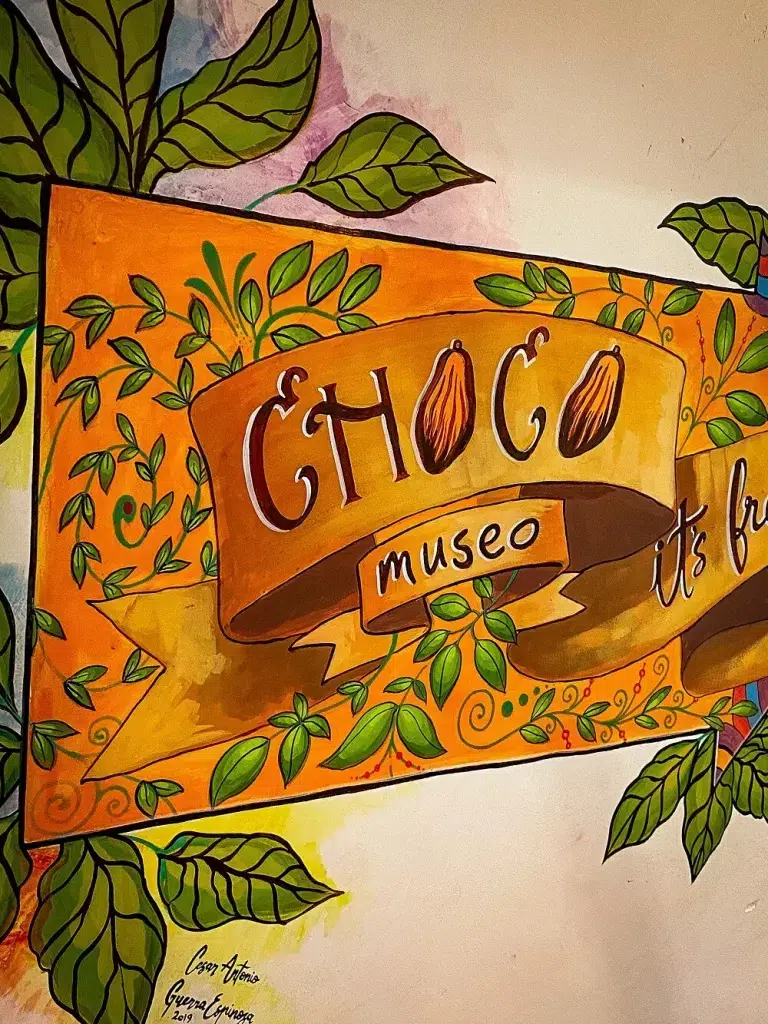
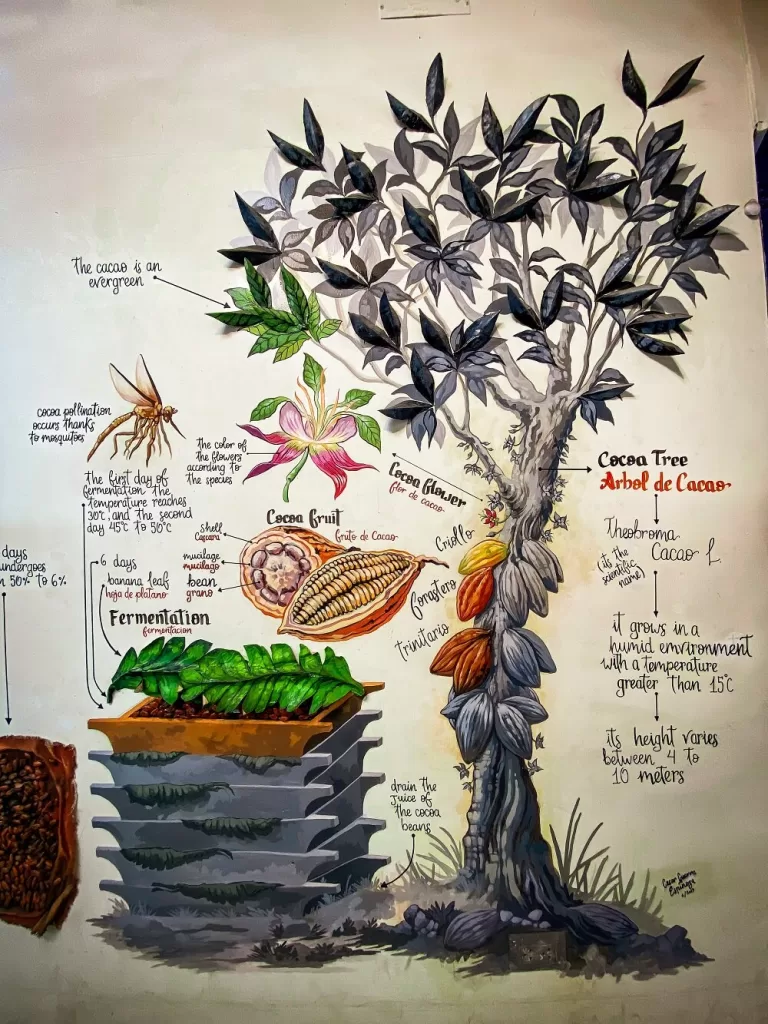
17. Chocolate Museum
The Chocolate Museum is situated on the second floor of an old colonial building only a few minutes walk from the main plaza.
It is quite an informal museum but does show some interesting things about the history of chocolate and how it is made.
The museum and shop is open every day and is free to visit. If you want to make the most out of your visit, then we recommend joining a chocolate making workshop which is a lot of fun.
18. Coca Museum
If you’ve been to any other parts of the Andes before visiting Cusco, you’ve probably been offered coca leaves or coca tea. You might be curious to learn a bit more about this plant that apparently helps with altitude sickness. If that’s the case, then make sure to visit the Coca Museum in Cusco.
We visited the Coca Museum in Puno, so didn’t feel the need to visit the one in Cusco. However, if this is your first time in Peru and you want to learn more about the plant then definitely head over there for some interesting information.
Without giving too much away, we learnt that the coca plant is the source of cocaine and the de-cocainized version is used in the flavouring of the well-known Coca-Cola drink.
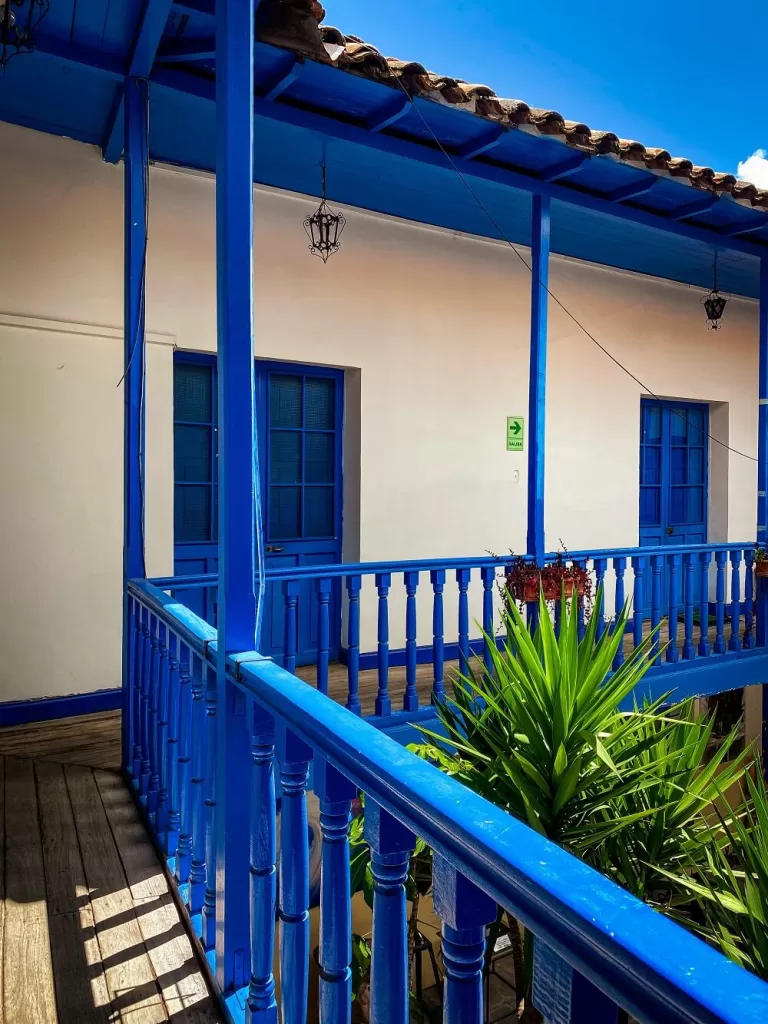
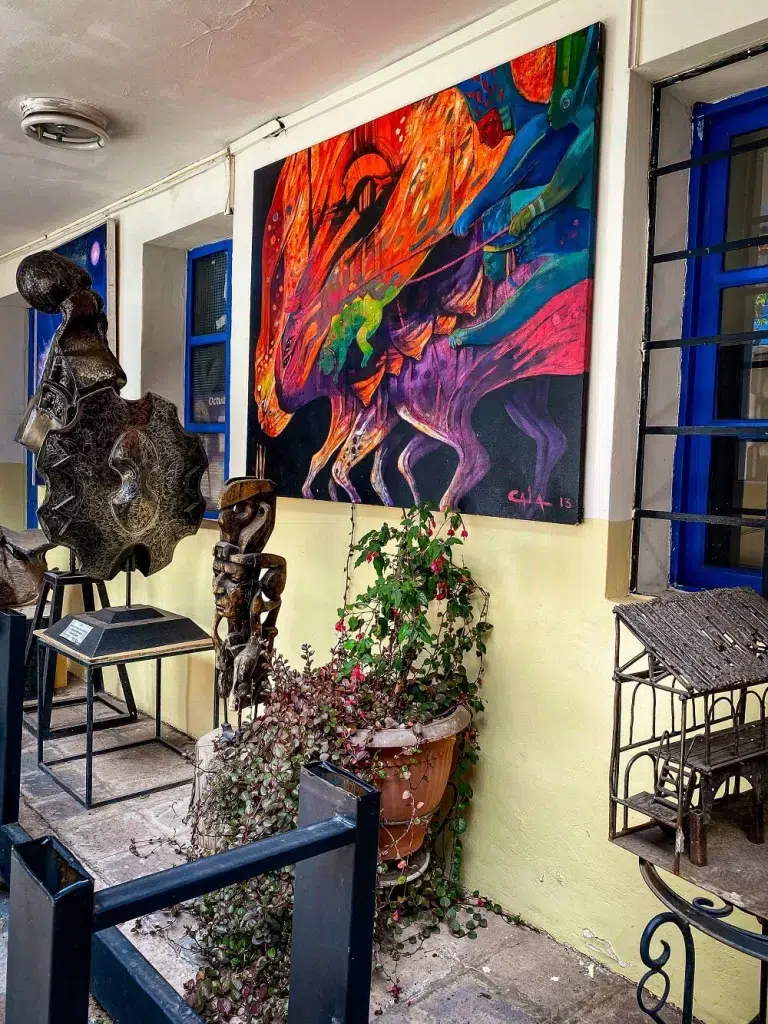
19. Museum of Contemporary Art
Opened in 1995, the Contemporary Art Museum houses more than 280 works from different contemporary and colonial artists, and is divided into a few exhibition halls. Apparently, the oldest work is Remigia Mendoza’s oil painting called ‘Río Vilcanota’ from 1897.
The museum is open daily between 9AM and 6:30PM. The entry fee is included in your Boleto Turistico ticket.
20. Centro de Textiles Tradicionales del Cusco
A great museum that offers insights into the story and history of the colourful, traditional fabrics and textiles you’ll likely be buying during your visit to Peru.
During your visit you can learn how they are made, what their significance is and how the locals try to keep the traditions alive.
Then you can head to one of the markets in Cusco and fill your luggage with beautiful Peruvian clothes. I mean, have you even been to Cusco if you haven’t bought an alpaca wool jumper?

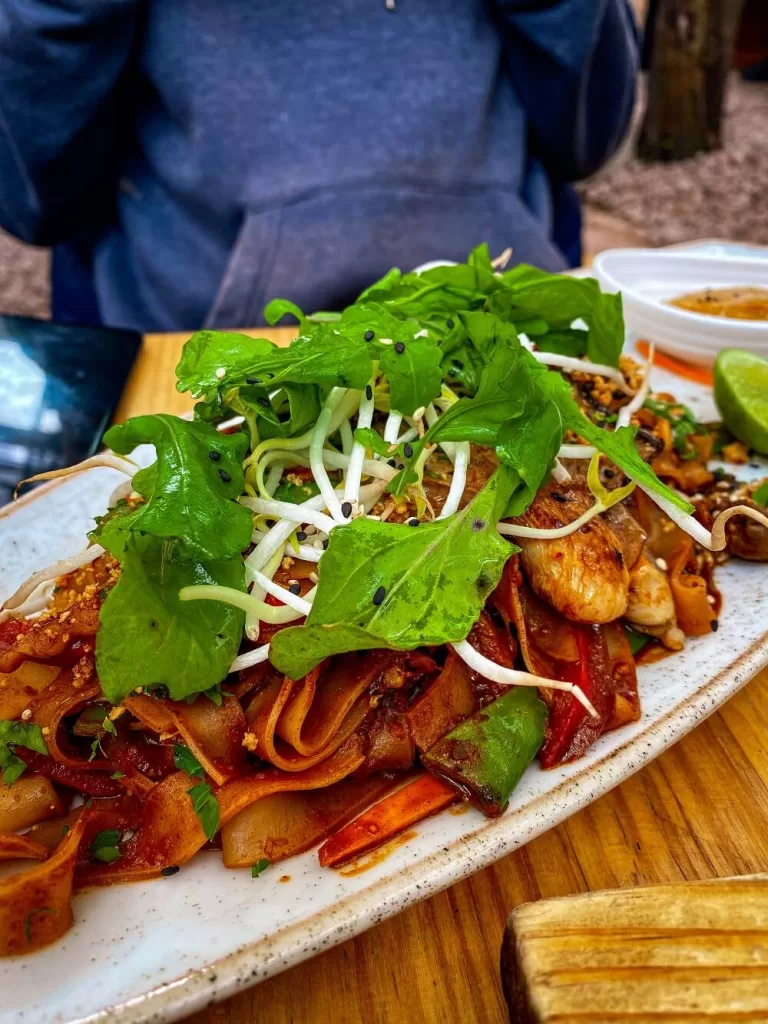
Places to Eat in Cusco, Peru
Cusco is packed with cafes, bars and restaurants, so you won’t have any trouble finding somewhere to eat during your stay. Below are some of our favourite places:
- Green Point (Our absolute favourite spot in Cusco. Great vegan and vegetarian food).
- Green Falafel (Nice vegan options, located in the San Blas area).
- Plaza Vista Café Lounge Bar (Food was okay, but it has great views of Cusco).
- Jack’s Café (Nice breakfast spot).
- San Pedro Market (There are a lot of yummy foods, drinks and snacks to try).
If you want to get more familiar with Peruvian cuisine, then you can consider joining a cooking class.
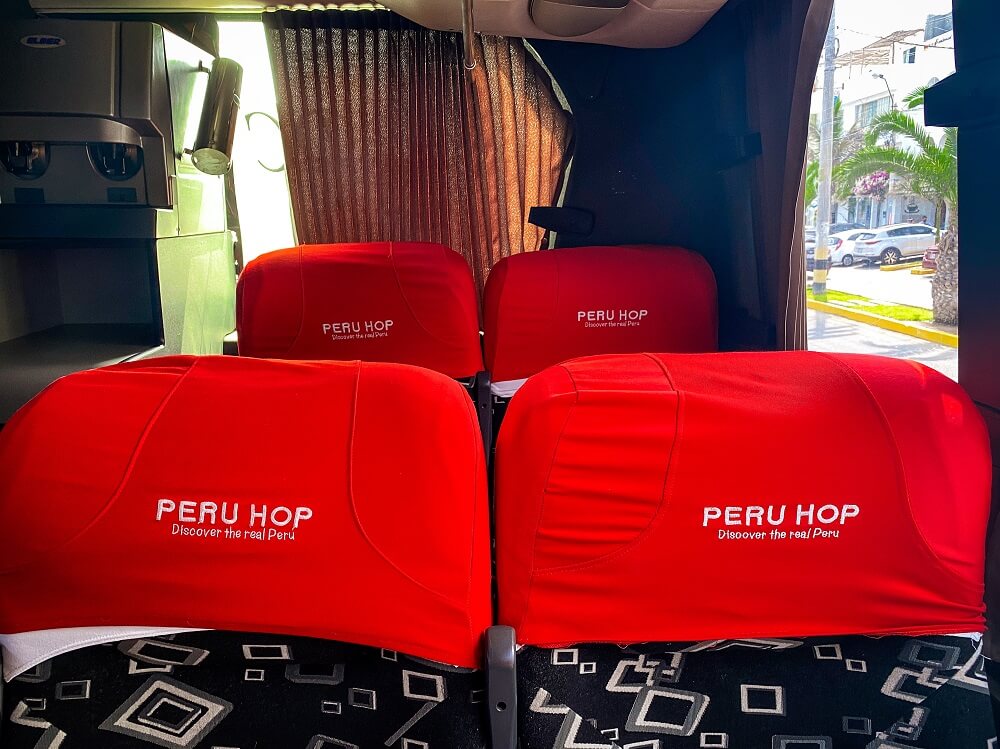
How to Get to Cusco, Peru
There are a few ways you can reach Cusco. If you’re short on time, then you can consider flying to Cusco. However, if you have more time, we recommend getting to Cusco over the course of a week or more, so that you can stop at some unmissable locations along the coastal regions of Peru, Arequipa and Lake Titicaca.
By Plane
Cusco has an airport called Alejandro Velasco Astete International Airport that offers both domestic and a few international flights. You can fly direct to Cusco from Lima, Arequipa, Trujillo, Juliaca, Ayacucho, and Puerto Maldonado. The only international destination where you can fly directly to Cusco is from Santiago, Chile. Airlines that operate at this airport are: Avianca, LATAM Peru, Sky Airline Peru, and JetSmart Peru.
Find Flights to Cusco✈️
Peru Hop
If you’re on a south of Peru tour, then booking a Peru Hop bus pass might be a great option for you. It’s a safe and favoured bus company by many and has lots of perks which you can read about in our bus guide to Peru. Peru Hop buses normally travel from Lima to Paracas, then to Huacachina in one day. The bus leaves Huacachina the next day to Nazca, where you can get an overnight bus to Arequipa to visit the Colca Canyon. From Arequipa, you can even travel to Puno and visit Lake Titicaca before boarding an overnight bus to Cusco.
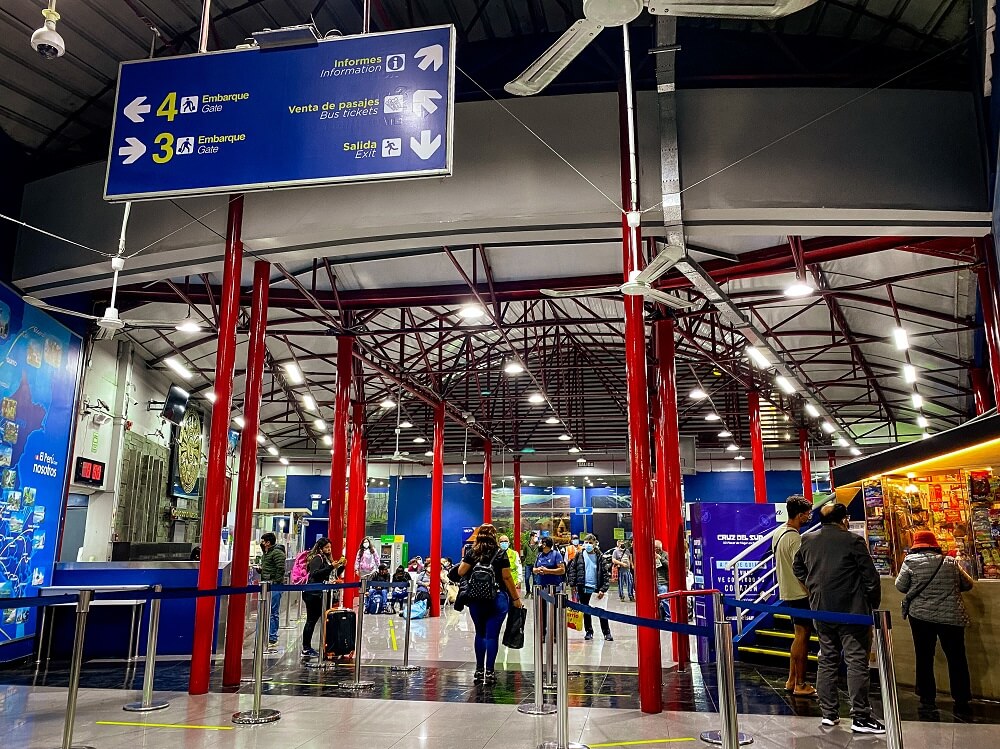
By Public Bus
If you’re not travelling with Peru Hop, then you can take a public bus to Cusco too. Bus companies such as Cruz del Sur, Civa or Oltursa provide services from Lima, Arequipa and Puno. The tickets cost anywhere between £15 to £40 ($US 18-50) depending on the time and bus company you pick.
Note. It takes nearly a day to reach Cusco from Lima. However, you can opt to break up your journey and see other places. For example, bus journeys from Arequipa are only around 10 hours long and from Puno it’s around 7 hours. You can buy your ticket online or at the bus station. Note that your bus might leave from a different terminal depending on the bus company.
You can find bus routes and companies operating to and from your next destination on these websites: Busbud.com and Rome2Rio.
Read our detailed guide on how to travel by bus in Peru.
By Train
If you’re travelling from places like Arequipa or Puno, you can opt to reach Cusco by train. This is going to be the most expensive way to reach Cusco and won’t be a quicker journey either. However, it will definitely be a scenic ride and a unique experience overall.
PeruRail Titicaca departs around 3 days a week from Puno to Cusco. You can also travel on the Belmond Andean Explorer which leaves Puno or Arequipa only once per week. You can read more about this option here.

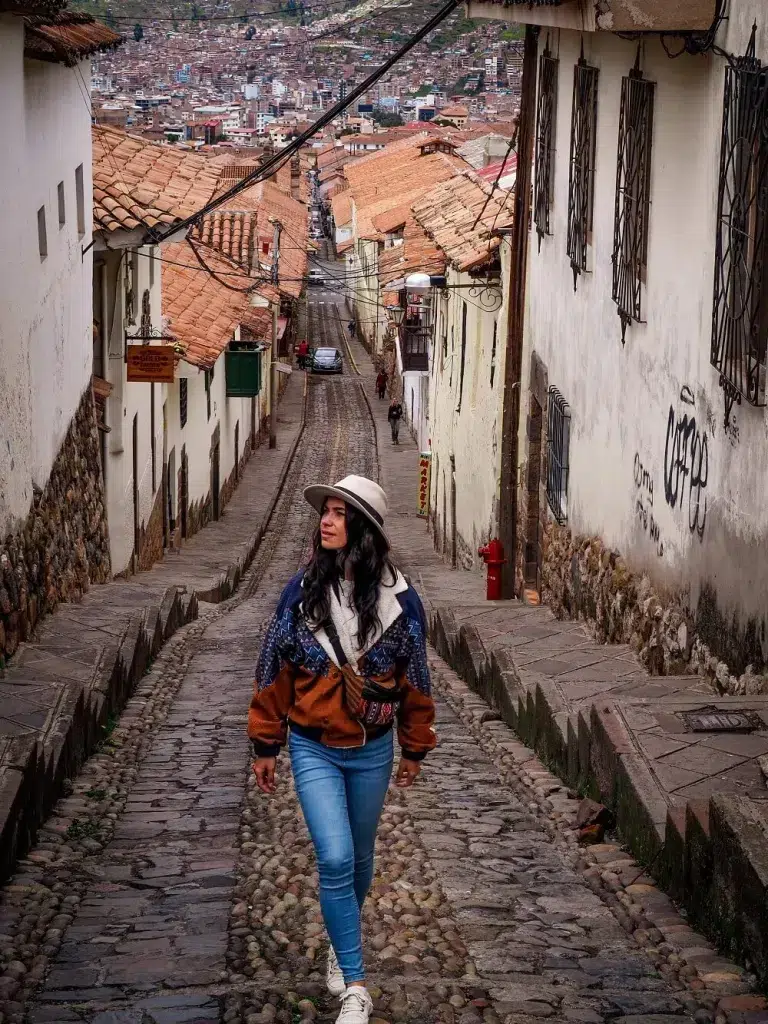
Best Time to Visit Cusco, Peru
The area has two seasons: wet and dry.
The rainy season is between October and March and normally January and February are the wettest months. Landslides are quite common during this time which can cause road closures and delays.
The dry season is between April and September with June and July being the driest months.
Tourists normally visit Cusco between April and October. The peak season is June, July and August, when the city will be at its busiest. Prices are higher during this time too and you’re more likely to have to pre-book your accommodation and a few popular activities.
For the best of both worlds, we recommend visiting just before or right after the high season, so April, May, September or October. We were in Cusco from the end of March and the temperatures were still pretty cool. By April the weather got much better and the crowds started to build.

How Long Do You Need in Cusco, Peru
This will really depend on how long you’re in Peru for and whether you need to acclimatise to altitude or not.
If you’re just flying into Cusco and planning on visiting or trekking to Machu Picchu, it’s important to stay at least one full day in the city to acclimatise. There’s nothing worse than getting altitude sickness en route to one of the wonders of the world right?
As you can see from the list above, there’s plenty to do in Cusco, so for that reason, we recommend spending at least 2 full days in the city. If you’re doing the Inca Trail or Salkantay Trek, you’ll normally have a briefing the evening before, so you won’t have much time sightseeing if you’re only there for a night.
If you’ve already visited other high altitude places in Peru, then you could just spend one day exploring the city, especially if you’re short on time.
In case you’re a slow traveller or digital nomad, Cusco is a great place to base yourself, so you can definitely stay longer and explore more of the Sacred Valley beyond Machu Picchu.
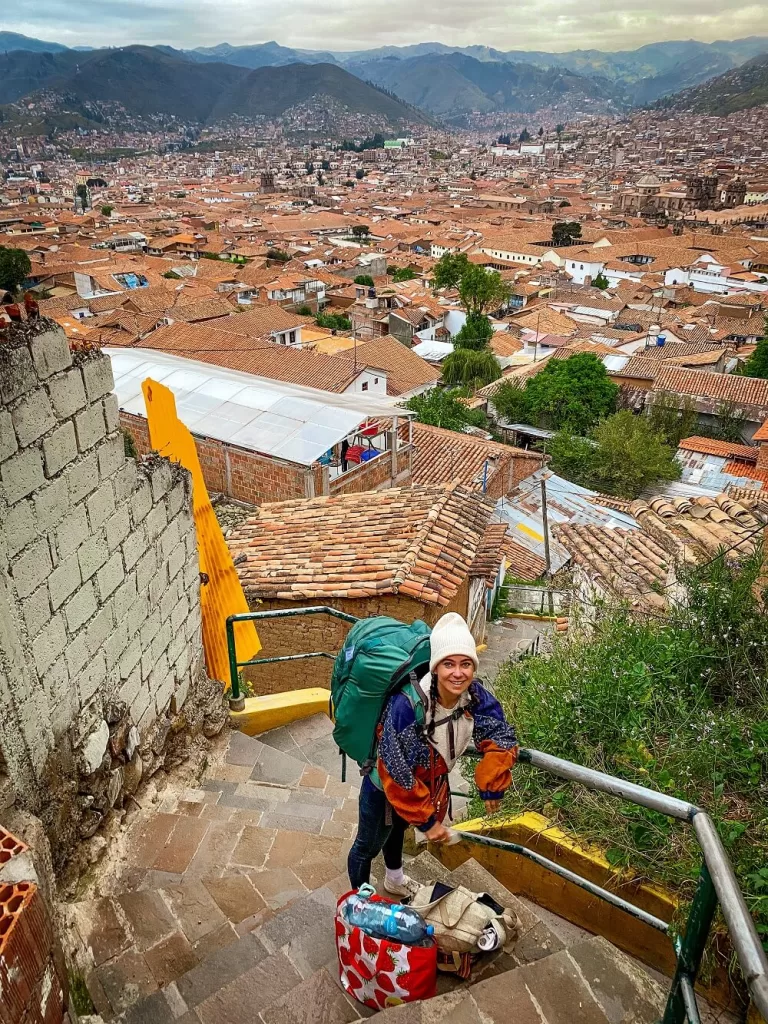
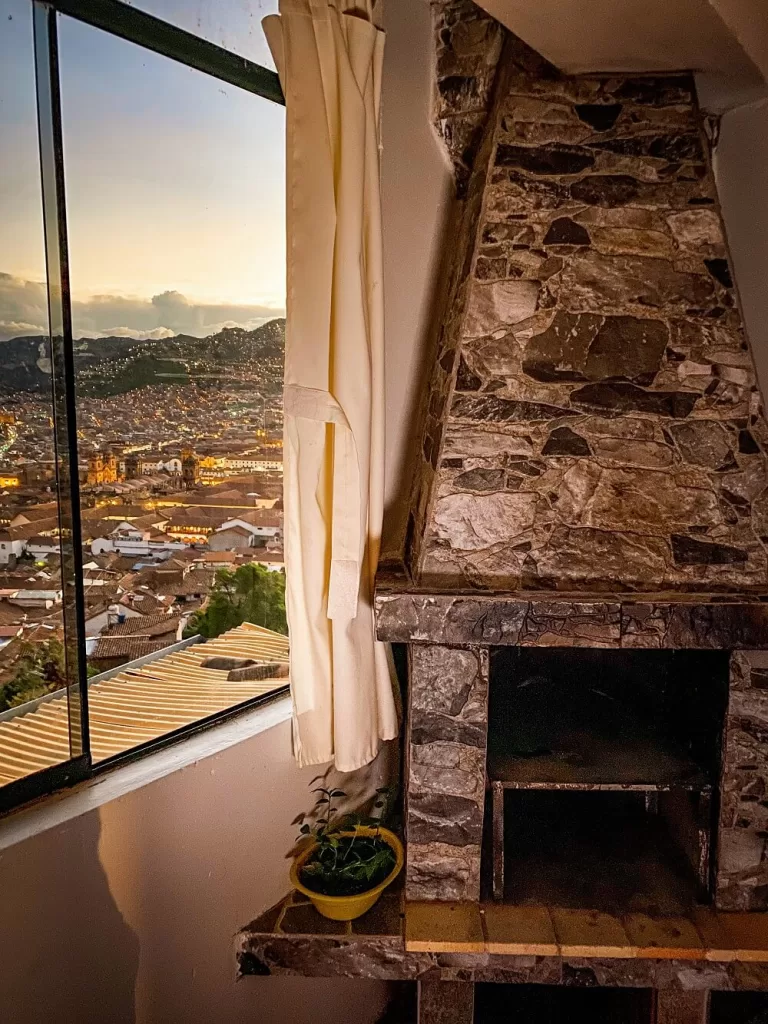
Where to stay in Cusco, Peru
There are plenty of hostels, hotels and Airbnb’s in Cusco and where you stay will depend on your needs and budget. If you’re only in Cusco for a short time, we recommend booking something closer to the main square. This way, you’ll be walking distance from the most popular spots.
Now, Cusco was our base for an entire month, so we wanted something a bit quieter and preferably with a view. For this reason, we booked an Airbnb quite far from the centre. It had amazing views, but it was quite a task to get our backpacks, shopping and laundry up the nearly one hundred steps that led up to our place at 3,400m.
So, our pro tip before committing to a place is to check if cars can access it, because taxis can only drive you to certain points. After that it’s just you, your heavy backpack and the stairs!
General Cusco Travel Tips
Altitude. Cusco sits 3,400m (11,154 ft) above sea level, so you can get altitude sickness. If you’re arriving from places like Puno, Arequipa or have hiked in the Colca Canyon, then you’ve probably acclimatised to the altitude already. However, if you’re coming from the coastal areas of Peru, then you may or may not get altitude sickness. There are many symptoms of altitude sickness, including dehydration, dizziness, headaches, shortness of breath and heavy breathing, loss of appetite, nausea and vomiting. Anyone can develop altitude sickness and its symptoms can be less or more severe.
Top Tip – Make sure to buy altitude sickness tablets before you head to Cusco. We also recommend spending at least one or two days in Cusco to prepare your lungs for high altitude hikes in Peru.
Earthquakes. Peru is in an active earthquake zone, therefore there are frequent tremors. You may or may not experience an earthquake during your stay. We recommend reading the US Federal Emergency Management Agency’s advice about what to do before, during and after an earthquake.
Tap Water. We don’t recommend drinking tap water in Cusco or anywhere in Peru for that matter. You can always boil your water or use a filtered water bottle if you want to be a responsible traveller and reduce your plastic waste.
Personal safety. Whilst we felt completely safe walking around the city, make sure to stay vigilant. Also, try not to walk at night on your own outside of the touristy areas.
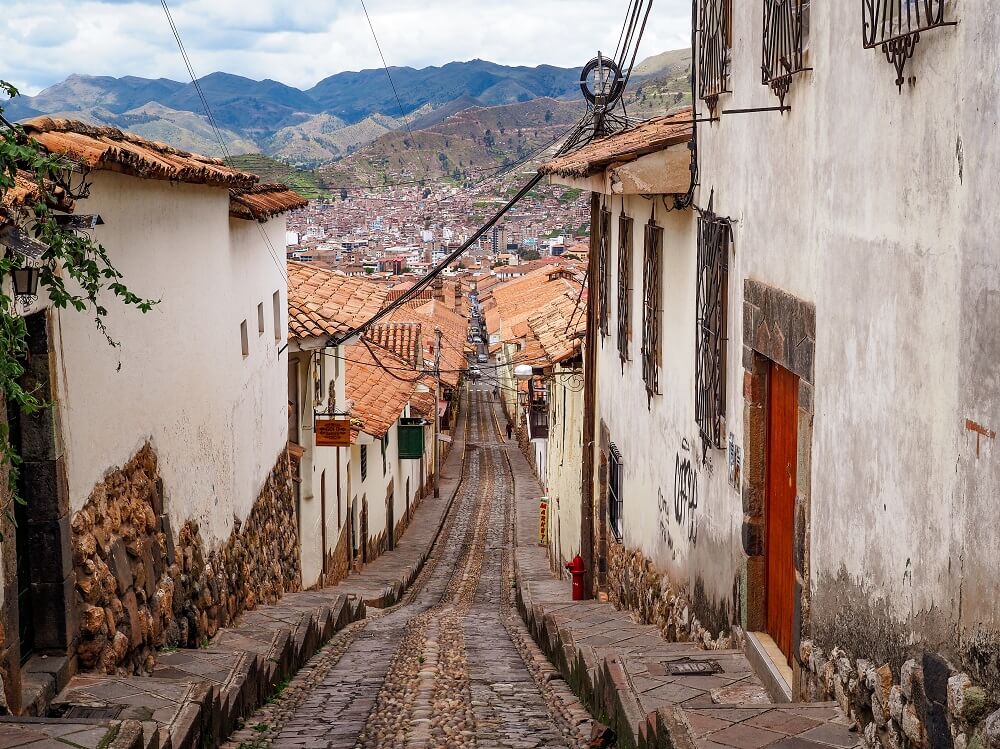
Final Thoughts on Things to Do in Cusco, Peru
We had mixed feelings about Cusco. Compared to other places we’d already visited in Peru, such as Arequipa and Puno, it just felt a lot more touristy and expensive. Obviously, since Cusco is the jump-off point to Machu Picchu, we didn’t expect much else.
At the start of our stay, the weather was still cold and wet which luckily improved over the course of the month. Once the temperatures got warmer, somehow the city just felt more inviting. We absolutely loved the huge selection of cafes and restaurants and walked to all the attractions.
We’d been in altitude for nearly 2 months, so towards the end of our stay we were definitely craving getting back to sea level.
Have you ever been to Cusco before? If so, how much of the city did you manage to explore? What was your favourite activity? If not, would you add Cusco to your bucket list? Let us know in the comments below.
Now, let your adventure begin,

Our Top Travel Resources
Accommodation: For hotels we always use Booking.com and Hostelworld for hostels. We also book longer stays on Airbnb or Vrbo.
Flights: To find the best flight prices we always check Skyscanner, Google Flights or WayAway. Then we also check the airlines’ websites too for comparison.
Car Rentals: We use Discover Cars when we want to rent a car as it compares local, national and international companies.
Activities: If we book organised tours we always check either GetYourGuide or Viator.
Foreign Currency: Whenever we can we prefer to pay in local currency and for that we always use our Wise card. We can easily withdraw money from the ATM or pay by card at most shops and restaurants.
Travel Insurance: We never go anywhere without travel insurance. You never know what will happen on your trip, so good travel insurance like SafetyWing can protect you in case of injury, illness, theft and cancellations.
eSIM and VPN: To get data abroad we use Airalo which is an app that allows you to download a prepaid eSIM to your phone in over 190 countries. Make sure to have a VPN to avoid hackers accessing your personal data when using public WIFI. We use Surfshark which is the only VPN that offers one account on unlimited devices.
Remember…It all starts with a Pin…
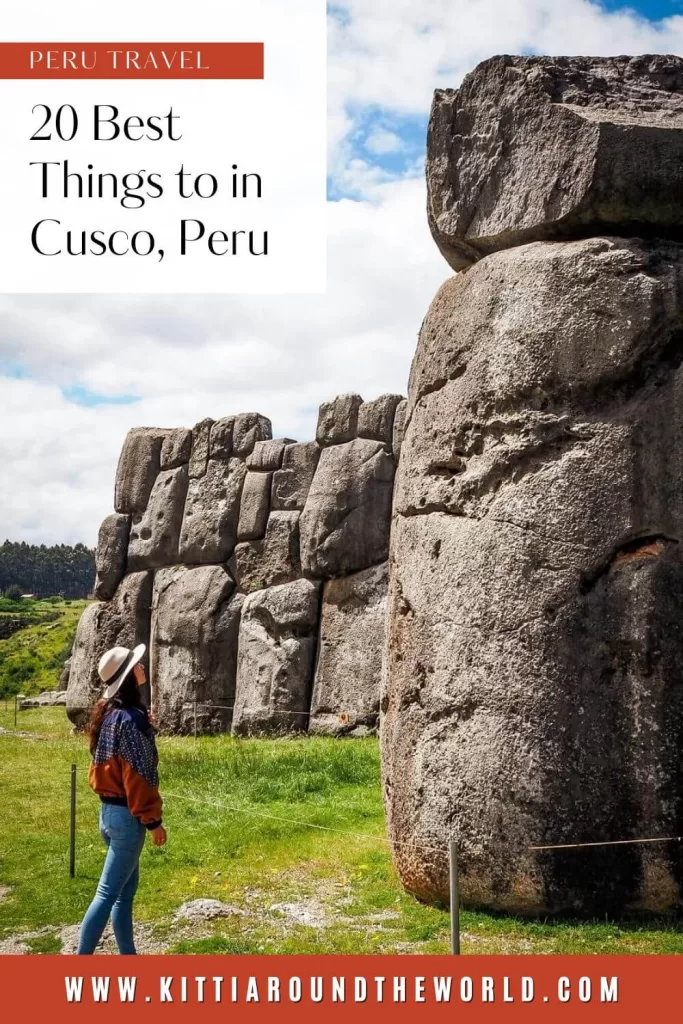



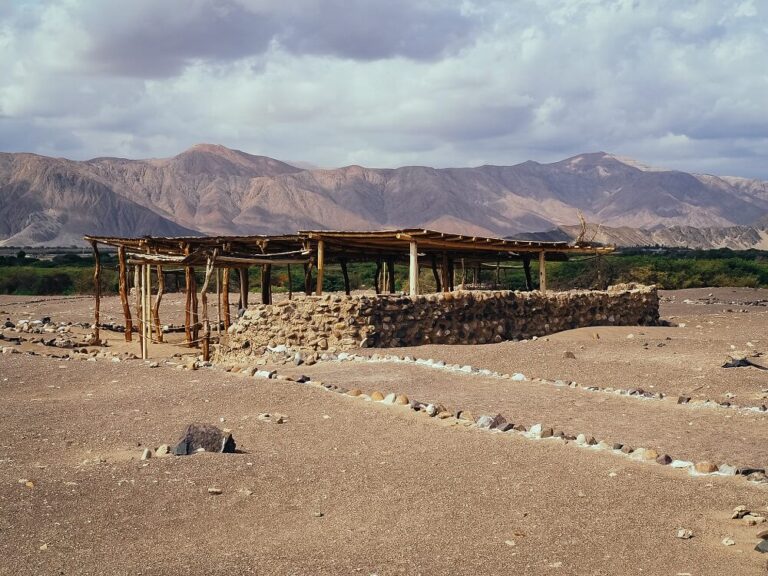

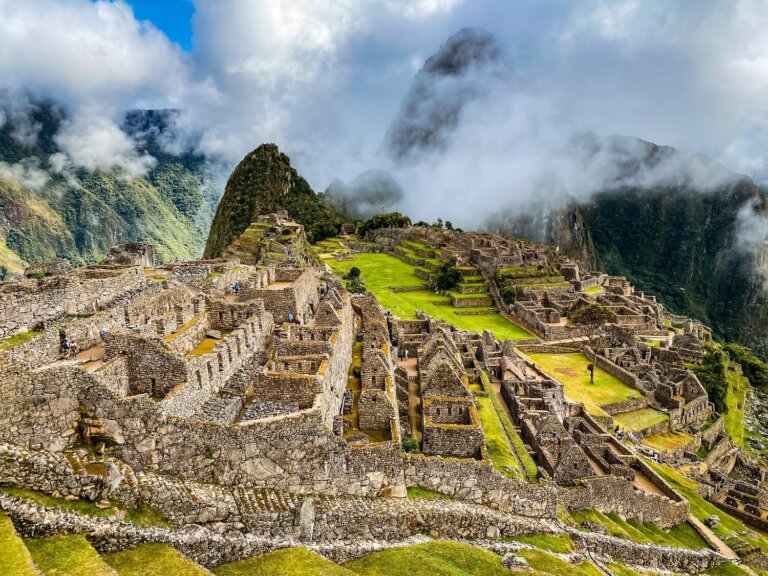
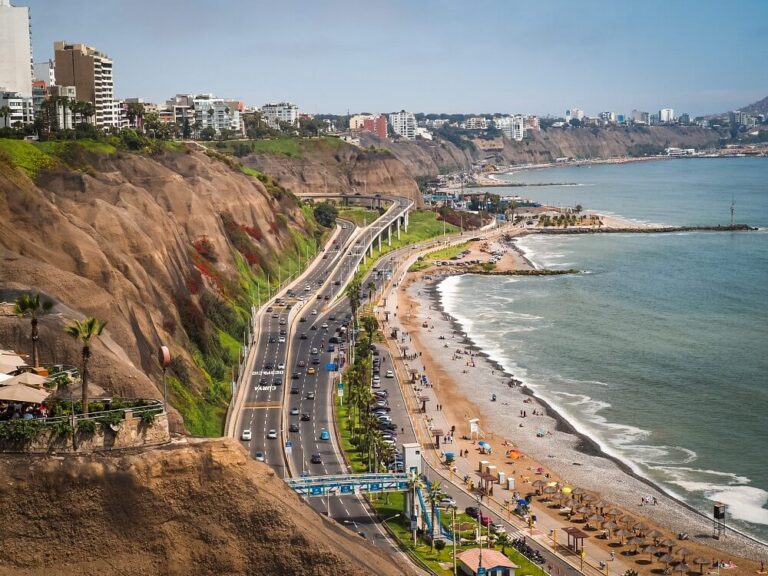

Wow! So much information on this blog! Cusco sounds like an amazing place to see. Love all the local ruins and museums too. Thanks for all your travel tips. 😉
Thank you Karan, we’re glad you enjoyed reading about Cusco. There’s definitely a lot to do in this city.
Looks like another place I would fall in love with😂 The view points look incredible!
Cusco was definitely an easy place to fall in love with 🙂 The viewpoints were really cool indeed.
Being a history buff, Cusco has always been on my travel wishlist. I found the Incas way advanced for their time. They have the best stonework architecture and roads of their era, and they used a unique strings-and-knot system to keep records as they lacked a proper writing system. Thanks for this detailed guide to planning a trip to Cusco!
Thank you for your comment Ashley. Seeing these Inca ruins with my own eyes definitely made me realsie just how incredibly talented these people were. Yeah it’s crazy about the strings and knot system they used. Although sometimes I wish they had some written material so we could learn more about their time. Hope you can visit Cusco soon, I’m sure you’ll love it there.
Machu Picchu is high up on my bucket list so information on additional things to do nearby is very helpful!
Thank you so much Kitty, we hope you can visit Cusco in the near future.